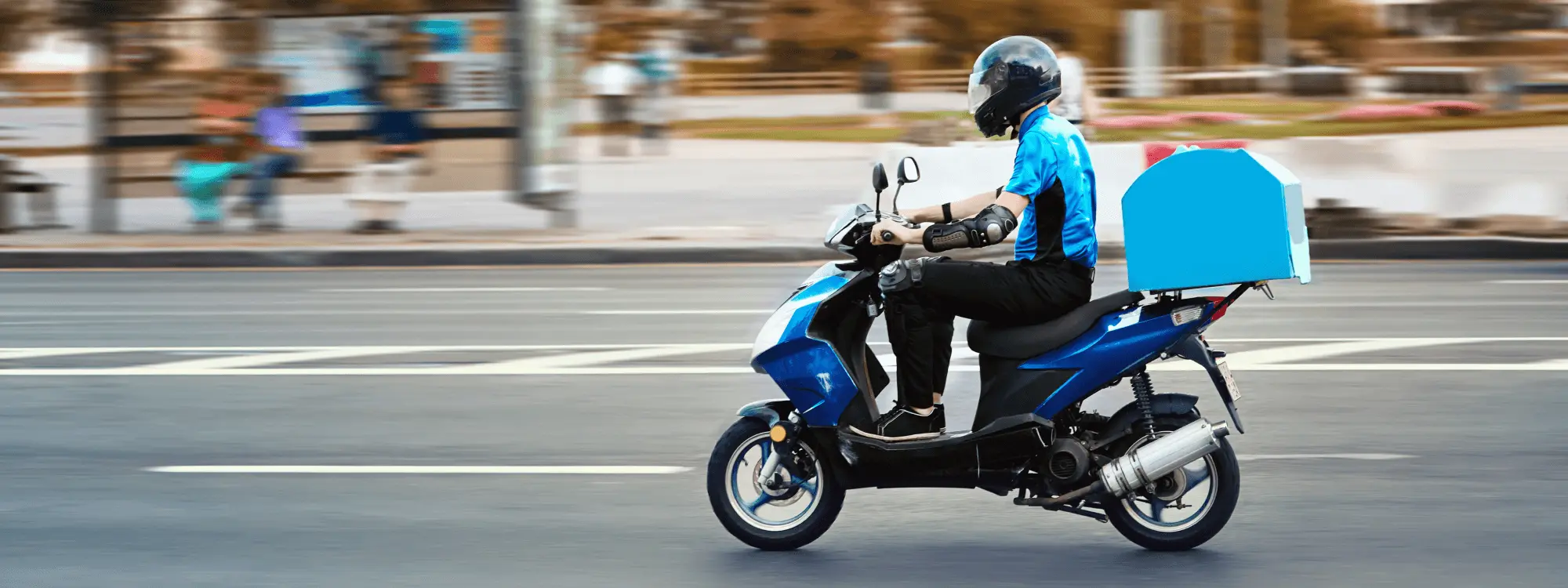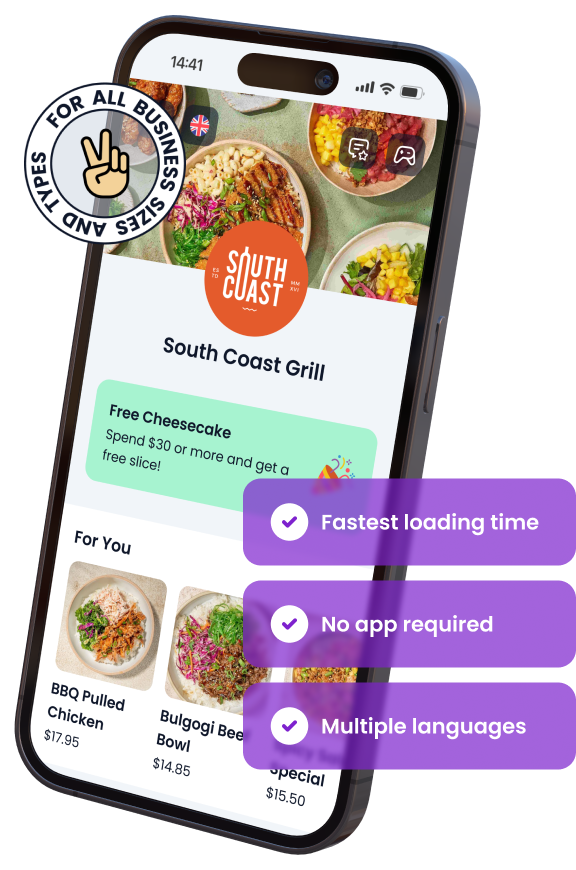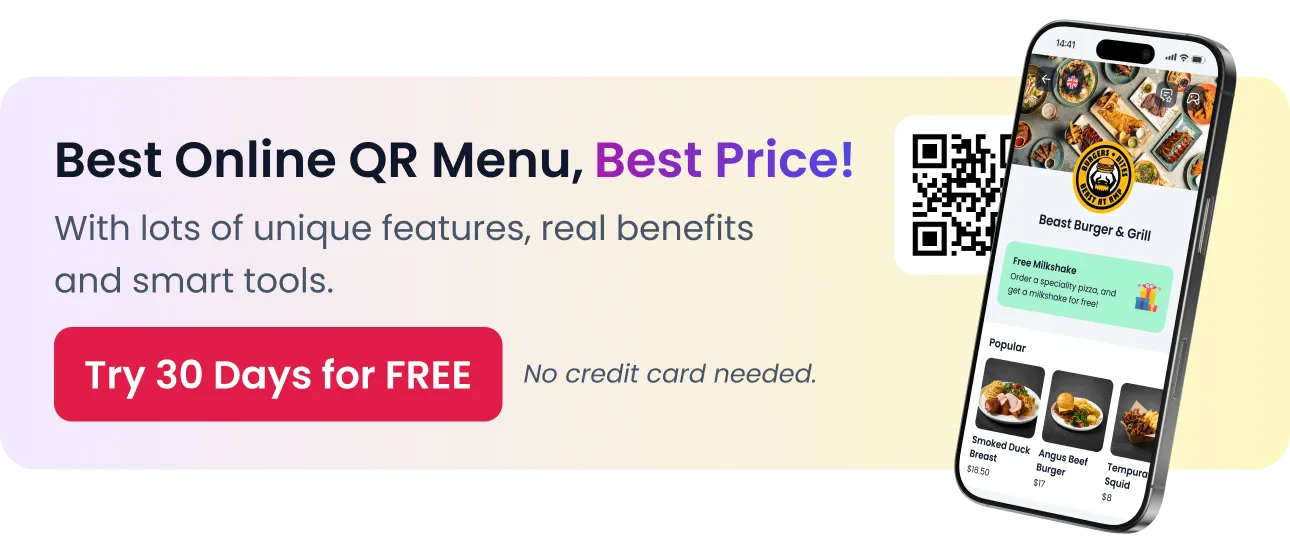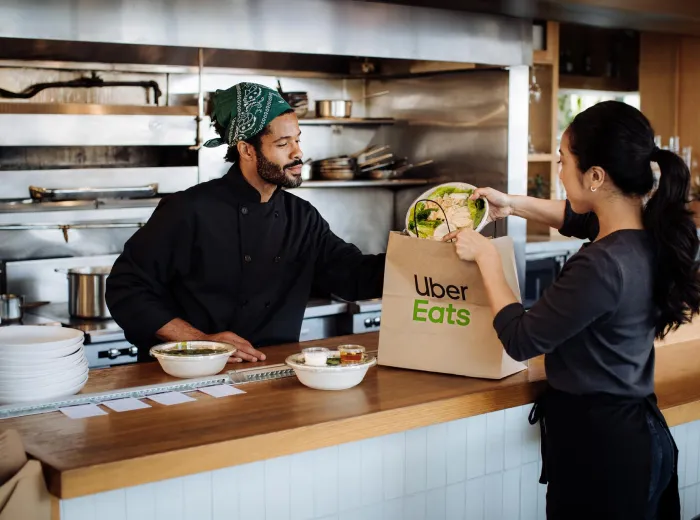

The Most Popular Food Delivery Apps in Hungary | Updated 2025 List
In today’s fast-paced world, convenience is everything—especially when it comes to dining. The surge in food delivery apps across Hungary is transforming the way people order meals, making it easier than ever for customers to enjoy their favorite dishes from the comfort of their homes. For restaurants, cafes, and coffee shops, partnering with the right delivery platforms has become an essential strategy to reach more customers and boost sales.
Hungary’s food delivery market has seen tremendous growth in recent years, driven by changing consumer habits and the impact of global trends. The COVID-19 pandemic accelerated this shift, as lockdowns and safety concerns pushed more people to rely on home delivery. Today, whether you run a small local eatery or a large restaurant chain, being visible on food delivery apps is no longer just an option—it’s a necessity to stay competitive.
This guide will explore the most popular food delivery apps in Hungary, their unique features, and how restaurant owners can leverage these platforms to maximize profits and efficiency. From choosing the right app to navigating commissions and optimizing visibility, this comprehensive guide will help you make informed decisions about the future of your restaurant’s delivery service.
Would you like to listen our deep-dive conversation about this article?
Why Food Delivery Apps are Essential for Hungarian Restaurants
Food delivery apps have become a critical tool for restaurants in Hungary to thrive in today’s competitive market. These platforms not only provide a convenient way for customers to order food but also offer valuable data and marketing opportunities for businesses. Whether you are looking to expand your customer base or streamline operations, integrating with food delivery apps is now a key strategy for success.
The Growing Demand for Convenience in Dining
The modern consumer expects quick and easy access to their favorite foods. Food delivery apps meet this demand by allowing people to order from a wide variety of restaurants with just a few taps on their phone. This shift in consumer behavior has led to:
- Increased customer reach: Delivery apps provide access to customers beyond the physical location of the restaurant.
- Convenient ordering experience: Customers enjoy browsing menus, placing orders, and paying online—all from one platform.
- Increased frequency of orders: The convenience of delivery encourages repeat orders, leading to higher revenue.
Impact of COVID-19 on Food Delivery Trends in Hungary
The global pandemic drastically changed how people interact with restaurants, and delivery services became a lifeline for both businesses and consumers during lockdowns. The key impacts of COVID-19 on the Hungarian food delivery scene include:
- Shift from dine-in to delivery: With restrictions in place, many restaurants pivoted to delivery as their primary revenue stream.
- Increased reliance on online platforms: Both customers and restaurants have become accustomed to ordering and delivering food through apps.
- Rise in safety measures: Contactless delivery and enhanced safety protocols reassured customers, making delivery a preferred option.
How Delivery Apps Can Boost Restaurant Sales
Using food delivery apps can significantly increase a restaurant’s revenue potential by reaching new customers and increasing the frequency of orders. Some key ways apps boost sales include:
- Wider audience: Restaurants are exposed to app users who may not have discovered them otherwise.
- Promotional tools: Many apps offer in-app promotions, deals, and discounts that can drive sales.
- Optimized delivery routes: Apps use sophisticated algorithms to ensure fast delivery times, keeping customers satisfied and encouraging repeat business.
In summary, food delivery apps have become an indispensable part of running a successful restaurant in Hungary, especially in the face of changing consumer expectations and market conditions.
Top 5 Food Delivery Apps in Hungary
In Hungary, a variety of food delivery apps have established themselves as essential tools for both customers and restaurant owners. Each app offers unique features, pricing models, and benefits, which can significantly impact your restaurant’s success. Below, we explore the top 5 food delivery apps in Hungary, detailing what each one has to offer for restaurants looking to tap into the growing delivery market.
1. Wolt
Wolt is one of the leading food delivery platforms in Hungary, known for its user-friendly interface and wide coverage.
- Overview of Wolt’s presence in Hungary: Operating in major cities, Wolt connects customers with a wide variety of restaurants, from local favorites to high-end establishments.
- Key features and benefits for restaurants:
- Easy-to-use restaurant dashboard for managing orders.
- In-app marketing tools to promote your business.
- Detailed customer data insights.
- Pricing and commission structure:
- Wolt charges a commission based on each order.
- Delivery fees are typically borne by the customer, but special promotions can offset these costs for restaurants.
2. NetPincér (Foodpanda)
As one of the most established food delivery services in Hungary, NetPincér, now rebranded as Foodpanda, continues to dominate the market.
- Evolution from NetPincér to Foodpanda:
- The rebranding allowed the app to integrate more global features and expanded service options, benefiting both restaurants and consumers.
- Special features and user experience:
- Extensive restaurant listings across the country.
- Customizable restaurant profiles and detailed menus.
- High customer engagement through loyalty programs and frequent offers.
- Cost breakdown for restaurants:
- Competitive commission rates with options for premium placement and promotion on the app.
- Additional fees for increased exposure and marketing campaigns.
3. Bolt Food
Bolt Food, originally a ride-hailing service, has quickly gained popularity in the Hungarian food delivery space due to its reliable service and reasonable fees.
- Bolt’s rise in the food delivery market:
- Bolt has rapidly expanded its food delivery arm, offering competitive delivery fees and a growing user base.
- Integrating Bolt with your restaurant POS:
- Easy integration with existing point-of-sale systems to streamline order management.
- Real-time tracking for both restaurant staff and customers.
- Fees and delivery zones:
- Restaurants pay a commission on each order, typically lower than some competitors.
- Bolt covers a broad range of urban areas, focusing on quick delivery times.
4. Kifli.hu
Kifli.hu is primarily a grocery delivery service but has recently expanded to include restaurants, making it a unique platform for meal delivery.
- Focus on grocery and meal deliveries:
- Kifli.hu allows customers to combine their grocery orders with meal deliveries from partner restaurants.
- How restaurants can collaborate with Kifli.hu:
- Restaurants can become part of the platform’s meal section, gaining exposure to Kifli.hu’s large and loyal customer base.
- Pricing and commissions for food businesses:
- Commission rates vary, but Kifli.hu offers flexible options for restaurants to participate in their delivery program.
5. Falatozz.hu
Falatozz.hu may not be as widely known as some of its competitors, but it plays a crucial role for smaller, local restaurants.
- A niche player in Hungary’s delivery ecosystem:
- Falatozz.hu focuses on small and medium-sized towns, offering a delivery solution where larger apps may not operate.
- Unique benefits for smaller restaurants:
- Lower commissions compared to the bigger players.
- Dedicated customer service and personalized support for restaurant partners.
- Commission structure and coverage areas:
- Commissions are relatively low, allowing smaller restaurants to maintain profitability.
- Coverage includes smaller towns, offering access to markets that larger apps might overlook.
These five apps provide a range of services and benefits for restaurants in Hungary. By understanding the differences in features, costs, and customer reach, you can select the best platform(s) for your business to maximize your delivery potential.
How to Choose the Right Food Delivery App for Your Restaurant
Selecting the best food delivery app for your restaurant in Hungary requires a careful evaluation of various factors. With so many options available, it’s essential to assess which platform aligns with your business goals, target audience, and operational needs. Below are key considerations to help you make an informed decision.
Evaluating Costs vs Benefits
When choosing a delivery app, it’s crucial to weigh the costs against the potential benefits. Each app has its own fee structure, so understanding the true cost of partnering with these platforms is vital to maintaining profitability.
- Commission rates: Delivery platforms charge different commission rates, usually ranging from 15% to 35% per order. Calculate how these fees impact your margins.
- Setup and subscription fees: Some apps may charge one-time setup fees or monthly subscriptions, while others only charge per order.
- Marketing and promotional tools: Consider what kind of promotional opportunities each app offers. Does it give you the ability to run discounts, loyalty programs, or featured placements in-app?
Identifying Your Target Audience and Delivery Zones
Different apps may cater to different segments of the population. Knowing who your target customers are and where they live can help you pick the right platform.
- Demographic fit: Research the customer base of each platform. For instance, younger, tech-savvy customers might favor apps like Wolt, while families may prefer grocery-integrated services like Kifli.hu.
- Geographic coverage: Not all apps operate in every region. Some focus on urban areas, while others cater to smaller towns. Make sure the app covers your delivery area.
- Order frequency in your area: Certain apps may have a higher order volume in specific regions, which could result in more frequent orders for your restaurant.
Integrating with Existing POS Systems and Websites
Streamlining your restaurant’s operations is crucial when managing delivery orders. Some apps offer seamless integration with your current point-of-sale (POS) system, while others may require manual input.
- POS integration: Check if the app can integrate with your POS system to automate order processing and tracking.
- Website compatibility: Some platforms allow you to integrate their services into your restaurant’s website, making it easier for customers to order directly from you while still benefiting from the app’s delivery services.
- Third-party software: Look for compatibility with third-party software that can help with analytics, order management, and customer retention.
By evaluating these factors, you’ll be in a better position to choose the food delivery app that fits your restaurant’s needs and ensures long-term success in the competitive Hungarian market.
How Food Delivery Apps Manage Customer Data and Loyalty Programs
One of the significant advantages of food delivery apps is their ability to collect and manage customer data, which can be a valuable asset for restaurants looking to build stronger relationships with their customers. In addition, many of these apps offer built-in loyalty programs that can help boost customer retention and encourage repeat business. Understanding how these apps handle customer data and loyalty programs is key to leveraging these tools for your restaurant’s success.
Using Customer Insights for Targeted Marketing
Food delivery apps collect detailed customer data, including ordering habits, preferences, and demographics. This data can be extremely useful for tailoring your marketing efforts to meet the specific needs and desires of your audience.
- Customer behavior tracking: Delivery apps track what customers order, how frequently they order, and even when they are most likely to place an order.
- Segmentation: You can use this data to create targeted promotions for different customer groups, such as frequent users, new customers, or those who haven’t ordered in a while.
- Personalized offers: By understanding customer preferences, you can create personalized offers that resonate with their tastes, driving both engagement and sales.
Loyalty Programs Offered by Delivery Apps
Many food delivery platforms offer loyalty programs that encourage customers to order more frequently by rewarding them with discounts, points, or special deals. These programs are often built into the app, making it easy for restaurants to participate.
- Points-based rewards: Customers earn points for every order, which can be redeemed for discounts or free items. This encourages repeat orders and customer loyalty.
- Discount tiers: Some apps offer tiered discount structures, where customers unlock larger discounts the more they order from a specific restaurant.
- Referral programs: Delivery apps often include referral programs that allow customers to share discount codes with friends, expanding your customer base.
How Restaurants Can Leverage App Data for Customer Retention
Restaurants can take the data collected by food delivery apps and apply it to broader customer retention strategies. By understanding who your most loyal customers are and what they value, you can create initiatives that keep them coming back.
- Tailored promotions: Use the data to offer exclusive deals to high-value customers, such as VIP discounts or early access to new menu items.
- Regular engagement: Send targeted push notifications or emails via the app to keep your restaurant top-of-mind for customers who haven’t ordered in a while.
- Feedback loops: Delivery apps often allow customers to leave reviews, which provides valuable feedback for improving your menu, service, or overall experience.
By effectively managing customer data and participating in loyalty programs, restaurants can enhance customer retention, build stronger relationships, and ultimately increase revenue. The insights gained from these apps provide actionable intelligence that can drive targeted marketing and personalized offers, creating a cycle of repeat business and satisfied customers.
The Future of Food Delivery in Hungary
The food delivery landscape in Hungary is evolving rapidly, shaped by technological advancements, changing consumer behavior, and a growing focus on sustainability. As more restaurants and customers turn to delivery services, the future of food delivery in Hungary is set to bring new opportunities and challenges. Below are key trends that are likely to define the future of this industry.
Predicted Trends in the Food Delivery Market
As technology and customer expectations evolve, certain trends are expected to dominate the food delivery space in Hungary.
- Increased adoption of delivery: Even post-pandemic, the convenience of food delivery has become a staple in everyday life, with more customers opting for delivery over dining out.
- Rise of ghost kitchens: Ghost kitchens, also known as dark kitchens or cloud kitchens, operate without a traditional storefront and focus solely on delivery. These models are expected to grow as they lower operational costs for restaurants.
- Expansion of delivery areas: As competition increases, delivery platforms will expand their geographic coverage to more rural and suburban areas, providing restaurants in smaller towns the same opportunities as those in cities.
Role of AI and Automation in Delivery Logistics
Artificial intelligence (AI) and automation are set to revolutionize the food delivery industry, making the process faster, more efficient, and more reliable for both customers and restaurants.
- Optimized delivery routes: AI can optimize routes based on traffic patterns and delivery locations, ensuring faster and more accurate deliveries.
- Automation in order processing: Automated systems will help reduce the chance of human error in order processing, ensuring that customers get exactly what they ordered.
- Drone and robot deliveries: In the near future, Hungary could see the adoption of drone and robot deliveries, reducing the need for human drivers and further speeding up the process.
Sustainability and Eco-Friendly Delivery Options
As sustainability becomes a top priority for both consumers and businesses, food delivery apps are exploring eco-friendly solutions to meet this demand.
- Sustainable packaging: More delivery platforms are pushing for environmentally friendly packaging, such as biodegradable or recyclable materials, to reduce waste.
- Carbon-neutral deliveries: Some apps are starting to offer carbon-neutral delivery options, where the environmental impact of deliveries is offset through green initiatives, such as reforestation projects or renewable energy investments.
- Electric delivery vehicles: Many food delivery services are adopting electric scooters, bikes, and vehicles to lower their carbon footprint and offer greener delivery alternatives.
In conclusion, the future of food delivery in Hungary is bright, with a strong focus on innovation and sustainability. Restaurants that stay ahead of these trends will be better positioned to thrive in a rapidly changing market, while customers will benefit from faster, more eco-friendly delivery options.
Maximizing Your Restaurant’s Profit with Food Delivery Apps
While food delivery apps can significantly boost sales, it’s essential to manage costs and optimize operations to ensure maximum profitability. With the right strategies, you can turn delivery services into a high-revenue channel for your restaurant while maintaining healthy profit margins.
Tips for Increasing Online Visibility
To maximize orders through food delivery apps, your restaurant needs to stand out from the competition. Here are some practical ways to improve your visibility:
- Optimize your menu: Use clear, enticing descriptions and high-quality photos of your dishes to attract more customers. Highlight popular items and use featured sections for promotions.
- Leverage in-app promotions: Many apps offer promotional tools that allow you to feature your restaurant at the top of search results. Use limited-time offers or discounts to attract new customers and boost sales.
- Encourage positive reviews: High ratings improve your ranking in search results and encourage more orders. Encourage satisfied customers to leave reviews by offering a small discount or free item for their next order.
Strategies to Reduce Commission Costs
Delivery apps typically charge commissions on each order, which can eat into your profits. However, there are ways to mitigate these costs:
- Negotiate commissions: If your restaurant consistently brings in high order volumes, you may be able to negotiate lower commission rates with the platform.
- Encourage direct orders: Use your website or social media to direct customers to order through your restaurant’s own delivery service (if available) or through a platform with lower commissions.
- Increase order size: Encourage customers to add more items to their order by offering combo deals, upselling, or adding a minimum order amount for free delivery.
Offering Promotions and Discounts to Boost Sales
Running promotions and offering discounts can be an effective way to increase your restaurant’s delivery sales, but it’s important to structure them in a way that benefits your bottom line.
- Limited-time offers: Create urgency by offering time-sensitive discounts, such as 10% off for orders placed before a certain time or during non-peak hours.
- Bundle deals: Offer combo meals or bundled items at a slight discount to increase the average order value.
- Loyalty rewards: Use loyalty programs offered by food delivery apps to incentivize repeat business. Reward frequent customers with discounts or freebies after a certain number of orders.
By implementing these strategies, your restaurant can take full advantage of food delivery apps to drive more orders, reduce costs, and maximize profits. The key is to strike a balance between offering value to customers and maintaining profitability through smart promotions, cost control, and operational efficiency.
Frequently Asked Questions about Food Delivery Apps in Hungary
Food delivery apps have become an essential tool for restaurant owners in Hungary, but navigating their features, costs, and benefits can be overwhelming. Below, we address some of the most frequently asked questions to help you make informed decisions and get the most out of these platforms.
What are the typical commissions for food delivery apps?
Most food delivery apps charge a commission for each order placed through their platform. In Hungary, these rates generally range from 15% to 35%, depending on the app, the order volume, and any additional services or promotions you choose to use. It’s important to carefully assess how these fees impact your profit margins and explore ways to negotiate or offset the costs.
How can I increase my restaurant’s ranking on these apps?
Boosting your restaurant’s ranking on food delivery apps involves a mix of strategies focused on customer satisfaction, visibility, and engagement:
- Maintain high ratings: Positive reviews and high ratings significantly impact your restaurant’s position in search results.
- Use in-app promotions: Many apps offer paid promotions that can increase your visibility temporarily.
- Engage with customer feedback: Responding to reviews and making improvements based on customer feedback can build your reputation and improve your rankings.
Is it worth partnering with more than one delivery service?
Yes, partnering with multiple food delivery apps can help you reach a broader audience and reduce reliance on a single platform. However, managing multiple platforms can be time-consuming and come with higher operational costs. Consider factors such as:
- Order volume per platform: If one app consistently delivers high order volumes, focusing your efforts there may be more efficient.
- Integration capabilities: Some restaurants use third-party software to manage orders from multiple apps through a single interface, simplifying the process.
How long does it take to get set up with a food delivery app?
The time required to set up your restaurant on a food delivery app depends on the platform. On average, the process takes between 3 to 7 days. Here’s a general timeline:
- Account setup: Typically, this takes 1-2 days to create your account and provide essential business information.
- Menu upload and integration: Uploading your menu and ensuring it is accurately displayed takes about 2-3 days.
- Approval and launch: The final approval by the app, ensuring your restaurant is live on the platform, usually takes an additional 1-2 days.
How do food delivery apps handle customer complaints?
Most food delivery apps have a customer service team that handles complaints about delivery delays, incorrect orders, or other issues. As a restaurant, your role is to manage food quality and preparation. Common ways apps handle complaints include:
- Refunds and credits: Customers may receive partial or full refunds, or in-app credits, depending on the nature of the complaint.
- Restaurant feedback: Some apps allow restaurants to respond directly to customer complaints, offering the opportunity to resolve issues and improve future service.
Can I set my own delivery zones and times?
Yes, most food delivery apps allow restaurants to set their own delivery zones and operating hours based on their capacity and target market. It’s important to:
- Define a realistic delivery area: Ensure your delivery zone is manageable for your kitchen and delivery team, taking into account peak traffic times and distances.
- Customize your availability: You can set specific delivery hours to match your busiest times or when your kitchen is best equipped to handle orders.
These FAQs should give you a clearer understanding of how food delivery apps operate in Hungary and how to make the most of them for your restaurant. By managing costs, optimizing visibility, and enhancing customer satisfaction, you can ensure that your partnership with these apps remains profitable and effective.
In today’s competitive food service industry, partnering with the right food delivery app is no longer just an option for restaurants in Hungary—it’s a necessity. By carefully evaluating the top platforms, understanding their pricing models, and leveraging the tools they offer, you can significantly increase your reach and profitability. Whether you’re a small local eatery or a large restaurant chain, choosing the right delivery app and implementing smart strategies will help you thrive in the ever-growing delivery market. With the future of food delivery set to evolve further through technological advancements and sustainability efforts, now is the perfect time to position your restaurant for long-term success in this space.
ABOUT THE AUTHOR
Erkin Coban
Your Customers Deserve The Best
And we got Menuviel for them.
The fastest and easy-to-use online QR menu with 12+ unique features. Choose Menuviel and elevate your service quality to the next level.
Use free for the first 30 days.

In This Article

Free AI Tools for Restaurants
TRY NOW ➜

Enjoy discounted prices for Hungary
We adjust our subscription price for Hungary, so you enjoy all the same great features at a lower, more affordable rate.







